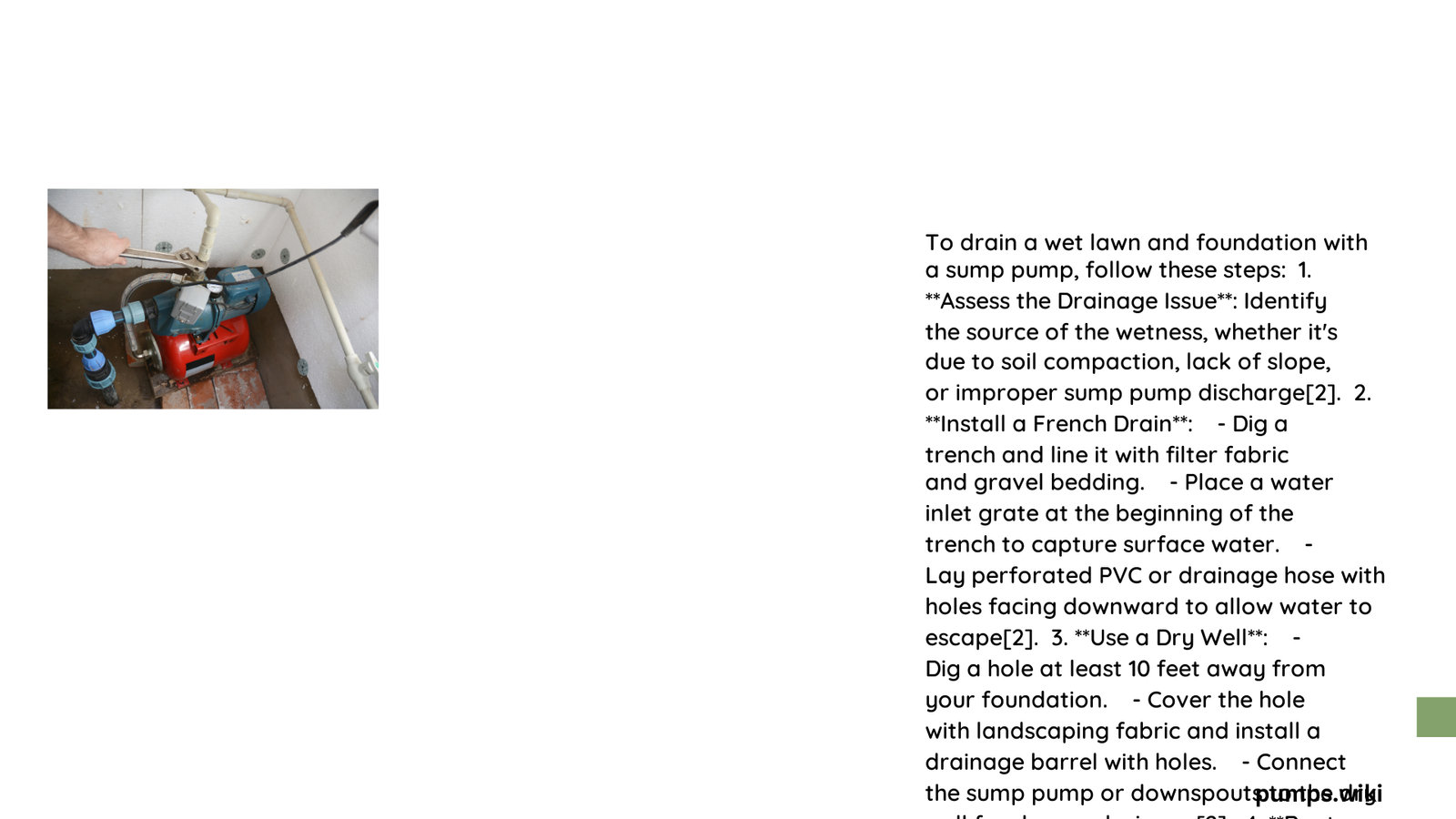Waterlogged lawns and foundations can cause significant damage to your property, leading to structural issues, mold growth, and landscape deterioration. A sump pump provides an efficient solution for draining excess water, protecting your home’s foundation and maintaining a healthy lawn by redirecting water away from critical areas. This comprehensive guide will explore strategic approaches to managing water accumulation using sump pump technology.
What Causes Wet Lawns and Foundation Water Accumulation?
Water accumulation in lawns and around foundations can result from multiple factors:
- Poor soil drainage
- High water table
- Inadequate landscape grading
- Heavy rainfall or snowmelt
- Underground water sources
How Do Sump Pumps Solve Water Drainage Problems?
Sump pumps act as a critical water management system by:
- Collecting Water: Capturing excess water in a designated pit
- Redirecting Flow: Pumping water away from vulnerable areas
- Preventing Damage: Protecting foundation and landscape from water-related deterioration
What Equipment Do You Need for Effective Drainage?

| Equipment | Purpose | Recommended Specifications |
|---|---|---|
| Sump Pump | Water Removal | 1/2 HP, 3000 GPH capacity |
| Sump Basin | Water Collection | 18-24 inch diameter |
| Discharge Line | Water Redirection | Minimum 10-20 feet from foundation |
| Check Valve | Prevent Backflow | Corrosion-resistant material |
Where Should You Install a Sump Pump?
Ideal Location Selection
The most effective sump pump placement involves:
- Identifying the lowest point in your yard or basement
- Ensuring accessibility for maintenance
- Positioning away from structural elements
- Considering soil composition and water table depth
How Deep Should the Sump Pit Be?
Recommended sump pit depth ranges between 2-3 feet, depending on:
- Local water table levels
- Soil drainage characteristics
- Anticipated water volume
- Specific landscape requirements
What Are the Installation Steps?
Comprehensive Sump Pump Installation Process
- Site Preparation
- Mark the lowest drainage point
- Clear debris and vegetation
-
Ensure proper ground leveling
-
Excavation
- Dig pit to recommended depth
- Create stable, level base
-
Line pit with filtration fabric
-
Pump Placement
- Position pump centrally
- Connect discharge line
- Install check valve
- Test functionality
What Maintenance Practices Ensure Longevity?
Regular Maintenance Checklist
- Monthly Inspections
- Check float switch
- Clean sump pit
-
Verify discharge line
-
Seasonal Considerations
- Winterize discharge line
- Test backup battery system
- Inspect for sediment buildup
What Are the Cost Implications?
Financial Investment Overview
- Initial Installation: $500 – $2,500
- Monthly Energy Cost: $10 – $30
- Potential Savings: Prevent foundation damage worth thousands
Pro Tips for Optimal Performance
- Use high-quality, corrosion-resistant pumps
- Consider battery backup systems
- Implement regular professional inspections
- Monitor discharge line for potential blockages
Conclusion
Draining wet lawn and foundation with a sump pump requires strategic planning, proper installation, and consistent maintenance. By understanding your specific landscape needs and implementing a robust water management system, you can protect your property from water-related damage.
